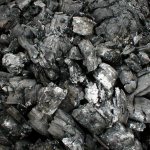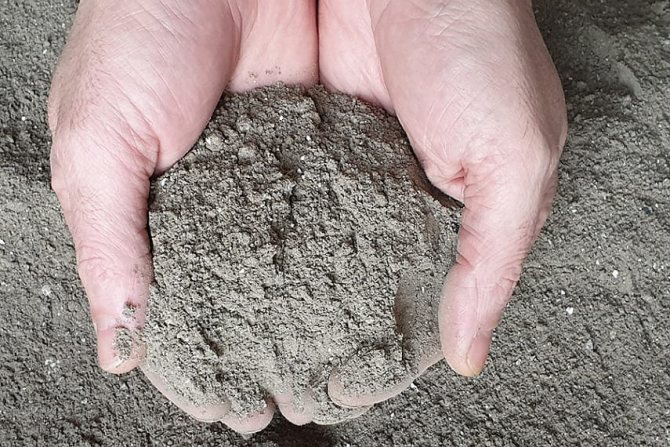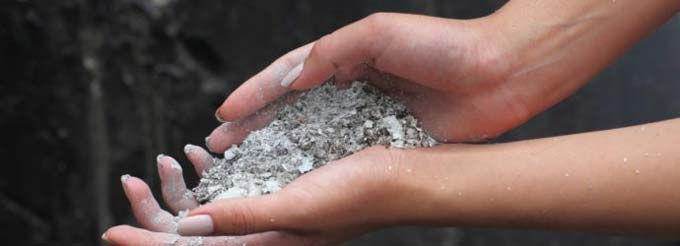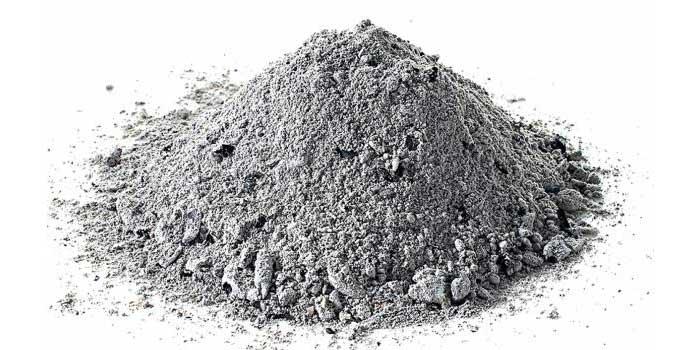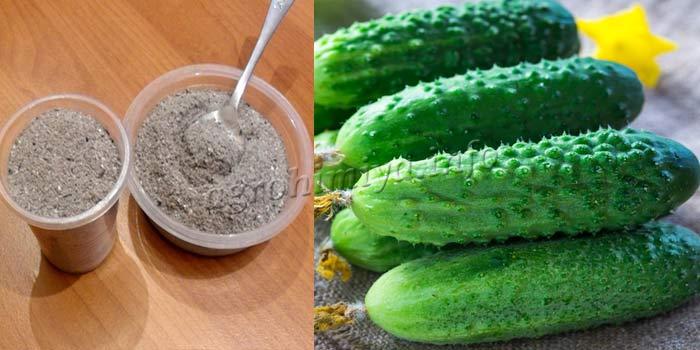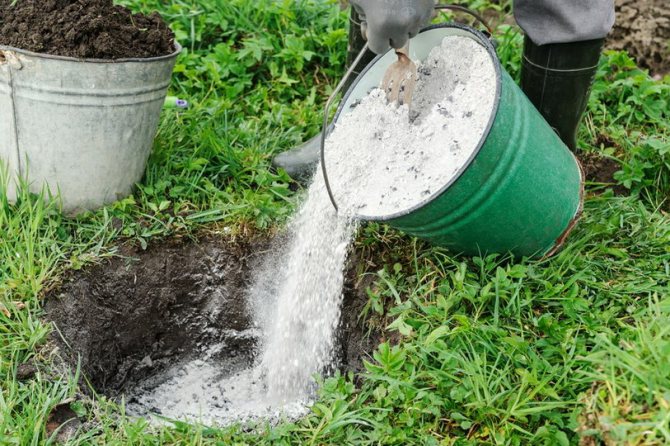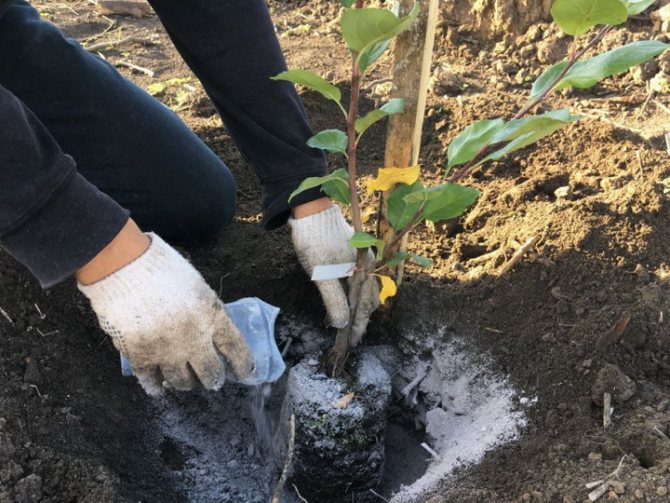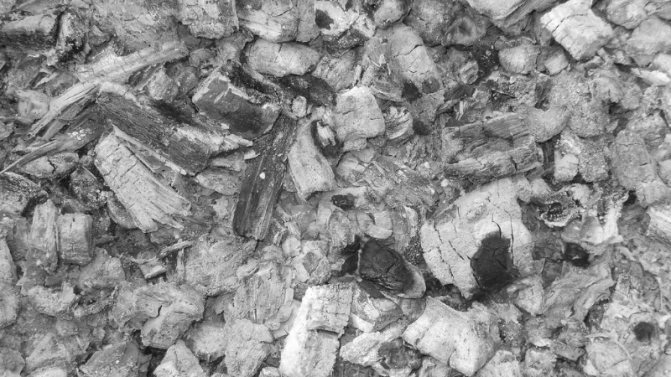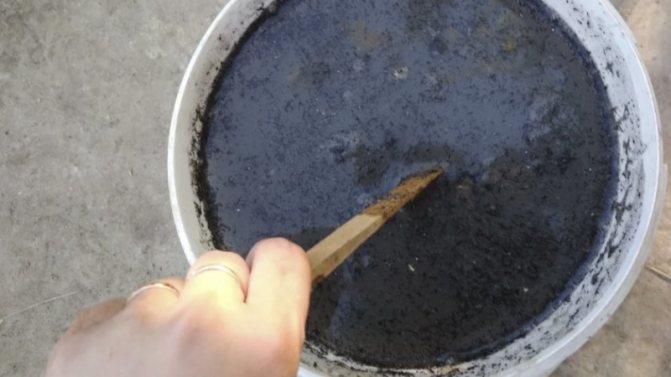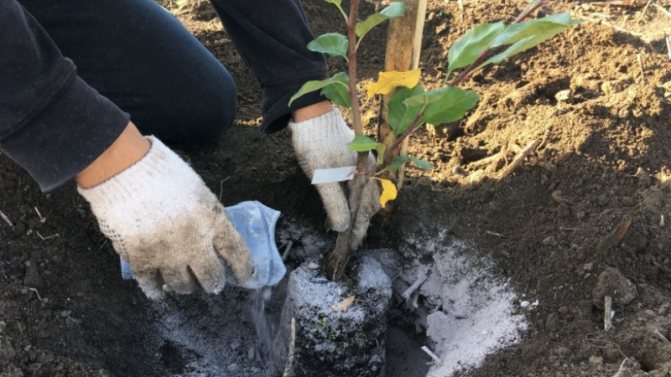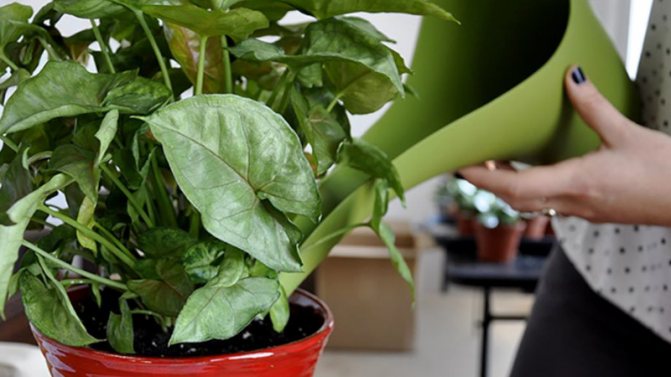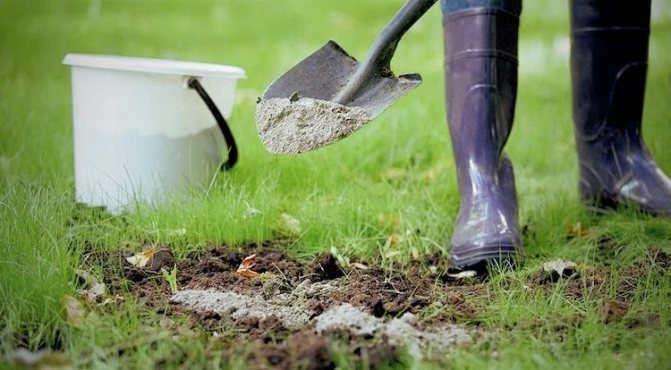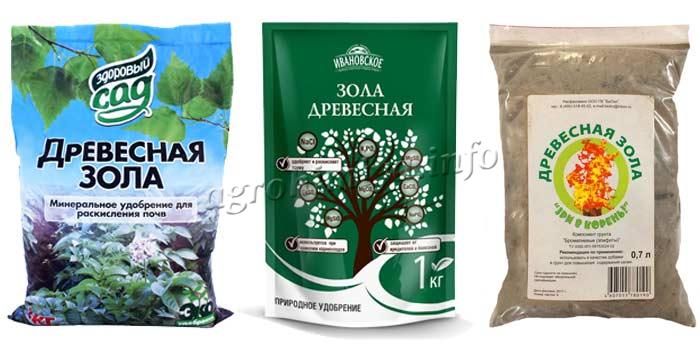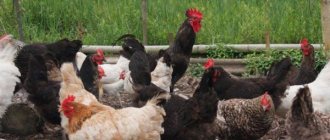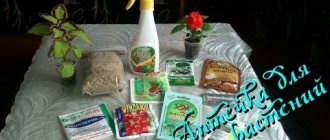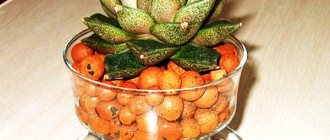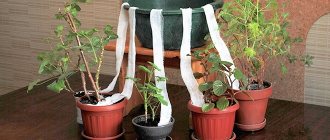Wood ash has been used as a fertilizer since antiquity. It is the most valuable source of many useful substances, the leaders among which are calcium, potassium and magnesium. Whether in horticulture, floriculture or horticulture, wood ash is needed everywhere. It is used as plant food and land enrichment all over the world.
Wood ash is a nutrient for all plants and contains calcium, magnesium, iron, sulfur and zinc, as well as many trace elements needed by vegetables and fruit trees. Ash is the best potash and phosphate fertilizer for acidic or neutral soils.
Views
To get ash, it is enough to burn dried grass, straw, twigs or leaves of various trees (deciduous or coniferous). Many gardeners use ash even with particles of coal.
Agricultural crops and indoor flowers cannot be fed with ashes of a reddish hue, because it contains an excessive ratio of iron, which is harmful to plant crops. Do not use under the guise of a nutrient composition and ash obtained after burning dyes, household waste, newspapers, plastic wrap. Such ashes contain harmful components that not only pollute the soil, but also pass into the fruits and structure of plants.
Depending on the raw material being burned, the composition of the ash can be different. The most valuable nutritional supplement in terms of potassium and phosphorus content is ash obtained after burning fern leaves or sunflower stalks. Ash of pines and birches becomes the leader in calcium content. The poorest ash in nutritional value is obtained after burning peat.
Properties
Ashes have no specific chemical composition. Its composition depends on which plants were burned. Ash can be obtained by burning coniferous and deciduous trees, peat, grass, manure, sunflower trunks - in all these variations, the chemical composition will be different.
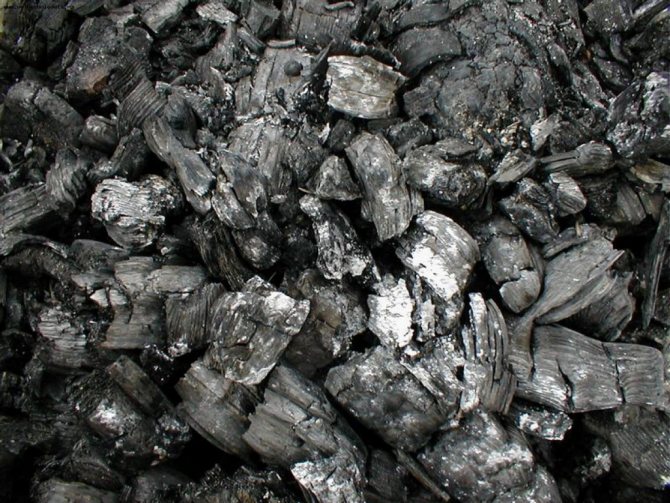
An approximate general formula for ash was obtained by Mendeleev.
According to this formula, 100 g contains:
- calcium carbonate - 17 g;
- calcium silicate - 16.5 g;
- calcium sulfate - 14 g;
- calcium chloride - 12 g;
- potassium orthophosphate - 13 g;
- magnesium carbonate - 4 g; magnesium silicate - 4 g;
- magnesium sulfate - 4 g;
- sodium orthophosphate - 15 g;
- sodium chloride - 0.5 g
It can be seen that even ash is considered an extremely potash fertilizer, but it contains a huge amount of calcium. Calcium is needed for vegetables from the garden that form a voluminous aboveground part, such as pumpkin and melons. It is important that calcium is contained in it in the form of 4 compounds at the same time: carbonate, silicate, sulfate and chloride.
- Calcium carbonate enhances metabolic processes, playing the role of a connecting link in the transport of nutrients in cells. It is indispensable in floriculture, as it increases the size and splendor of the inflorescences. Cucumbers need calcium carbonate as they grow faster than other vegetables.
- Calcium silicate combines with pectin and binds cells, holding them together. Silicate affects the absorption of vitamins. In particular, onions "love" this thing. If there is not enough silicates, the onion stratifies and dries up, but it is worth watering the onion beds with ash infusion, the situation is immediately corrected.
- Calcium sulphate found in superphosphate, a popular mineral fertilizer. Calcium sulfate, introduced into the ground in the form of ash, is better absorbed by plants than superphosphate. This compound is necessary during the formation of a greenish mass, for example, when growing greens or onions on a feather.
- Calcium chloride activates photosynthesis, increases winter hardiness of grapes and fruit trees. It is generally accepted that chlorine is not safe for plants. The exception to this rule is wood ash. The composition of the fertilizer fully meets the needs of plants for nutrients, including chlorides. Chlorine is contained in fruit and vegetable crops in an amount of up to 1% of dry weight, and in tomatoes it is more. If there is not enough chlorine in the soil, the fruits of tomatoes rot, apples are not stored properly, turn black, carrots crack, grapes fall off. When eating roses, calcium chloride is required - it protects the crop from blackleg disease.
- Potassium. The composition includes potassium orthophosphate K3PO4, which is necessary for regulating the water balance of plants. Potassium compounds increase the winter hardiness of crops that love warmth and alkalize the soil, which is important when feeding roses, lilies and chrysanthemums.
- Magnesium. The ash contains 3 magnesium compounds, which are necessary for the normal life of plants.
Structure
Almost the entire periodic table is collected in the ashes of plant residues. The only component missing from the ash chemistry is nitrogen. Depending on the raw material burned, the ratio of the main trace elements can be different.
| Ash type | Phosphorus | Potassium | Calcium |
| Sunflower | 4 | 35 | 20 |
| Buckwheat husk | 4 | 35 | 19 |
| Rye | 6 | 14 | 10 |
| Wheat | 9 | 18 | 7 |
| Potato tops | 8 | 20 | 32 |
| Birch | 6 | 12 | 40 |
| Spruce | 3 | 4 | 26 |
| Pine | 6 | 12 | 40 |
| Peat | 5 | 4 | 26 |
| Dung | 6 | 12 | 9 |
Useful components of ash are in a form that is easily digestible for plants.
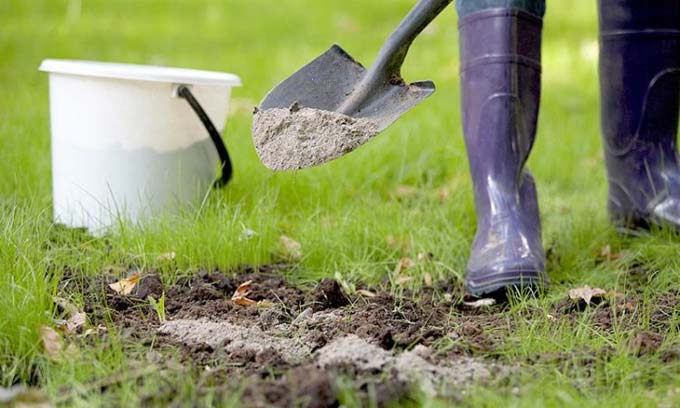

Benefit
Wood and plant ash, as a fertilizer for many indoor flowers and garden crops, has the following beneficial qualities:
- improves the quality of the composition of acidic soil rocks;
- improves a favorable habitat for beneficial microflora;
- helps seedlings take root faster;
- stabilizes the metabolic processes of plants;
- helps flowers bloom more luxuriantly;
- promotes better absorption of nutrients and vitamins;
- increases the resistance of agricultural crops to unfavorable climatic changes and the development of disease-causing processes;
- promotes active development and rapid growth of the root system;
- stabilizes the process of photosynthesis;
- increases frost resistance of agricultural crops;
- strengthens plant immunity;
- is a prophylactic agent against pest attacks.
How do you know when crops need additional nutrition?
You can tell if your plants need micronutrients by looking at their appearance. By the same signs, it is possible to determine that agricultural crops are oversaturated with nutritious dressings. Both have a negative impact on the health and immunity of cultures.
Signs of nutritional deficiencies:
- Potassium deficiency - deformation of the shape of the foliage, the appearance of yellow or dark spots on the surface of the leaf plates, the dropping of buds, as well as ovaries, premature fall of flowers, the formation of dark spots of various shapes on the fruits, the cessation of crop growth, the dying off of the upper greens of the shoots.
- Deficiency of calcium or magnesium - wilting of foliage, deformation of leaf plates (leaves curl into a thin tube), tips of leaves begin to dry, flowers lose aroma.
Signs of nutrient overload:
- Excess potassium - blanching foliage, premature fall of leaves, darkening of the pulp in apple and pear fruits.
- Excess calcium - the death of shoots, premature foliage, the formation of signs of chlorosis, active growth of greenery without the formation of ovaries and flowers.
- Magnesium oversaturation - death of roots, lethargy of the plant, lack of flowers or fruits.
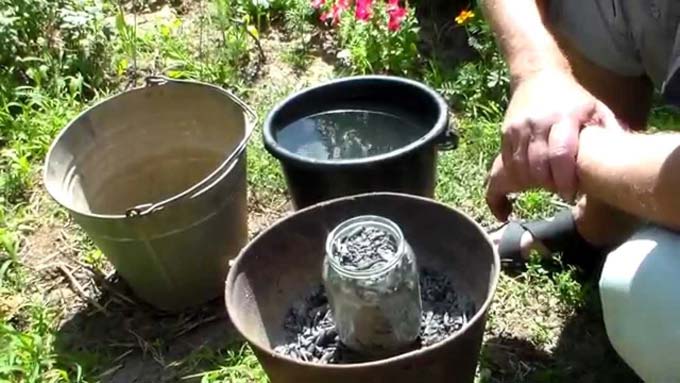

Ash application
Ashes obtained after burning any plant material is a good organic-mineral supplement for many agricultural crops and flower plants. The product can be used for both root and foliar feeding. When planning fertilization with a nutritious product, it is required to focus on the vivid needs of agriculture.
Application methods:
- Infusion - mix 3 tbsp in 1 liter of cool water. tablespoons of ash. Leave the solution for a week in a cool, shaded room. Periodically, the solution must be shaken or stirred with a wooden spatula. After a week, dilute the concentrated solution with cool water (ratio 1: 3) and can be used as directed. Ash infusion is an excellent growth stimulant; it is recommended to use it for seed preparation (seed soaking) before sowing.
- Ash and soap solution - stir 4 tbsp in 2 glasses of cool water. tablespoons of ash. Leave the solution to infuse for a couple of days, then strain. In a separate container, mix 1/3 of a piece of 200 g of laundry soap into 2 liters of water. After - interconnect the contents of 2 containers, mix thoroughly. Ash and soap solution is an excellent means of prevention and control of harmful insects. The composition is used as a sprayer for the surface of agricultural crops. It is recommended to treat crops with an active composition against the attack of ticks, onion flies, moths and many other insects.
- Powder (dusting) - dry ash powder is used for dusting many cultivated plants. It is recommended to dust the potato tubers before sowing (1 kg of dry ash is taken for 30 kg of root crops). The method is used for the prevention and destruction of slugs and various snails, as well as for the treatment of plants affected by powdery mildew, gray or white rot.
Ash as fertilizer for potatoes
Ash as a fertilizer is well suited for potato planting. This vegetable crop consumes large amounts of potassium, but does not take chlorine. The ideal combination of high amounts of potassium and complete absence of chlorine is present in the ash. Fertilizing potatoes with ash significantly increases the yield of the crop, in addition, it has a beneficial effect on the quality of the fruits.
Fertilization methods for potatoes:
- During planting, ash is added to each planting hole (up to 400 grams per hole).
- Dusting the topsoil during the growing season.
- Using ash while hilling potatoes (2 tablespoons of ash under a bush).
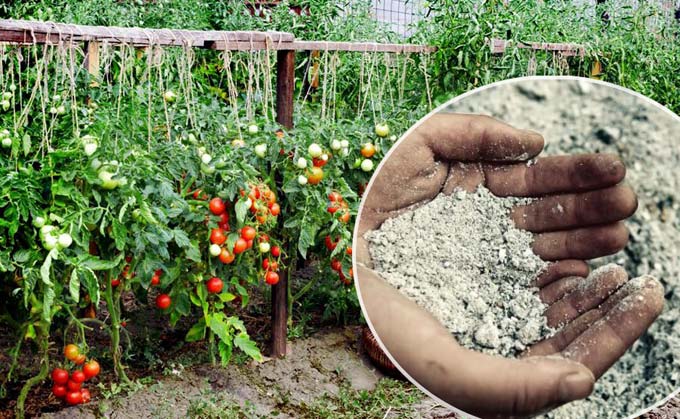

For other vegetable crops
All vegetable crops respond favorably to ash fertilization. But the ways in which crop nutrients are used differ.
- Cucumbers, pumpkin, squash, zucchini - ash helps agricultural crops to develop rapidly and actively bear fruit. Before the start of sowing, ash is introduced into all planting holes (up to 2 tablespoons per hole). Additionally, the top soil layer is powdered with ash after planting seeds or seedlings (2 cups for one plant). At the time of the growing season, fertilizing of the bushes is carried out (1 glass of product per sq. M. Plantings with mandatory watering).
- Solanaceous crops - before the start of sowing work, 1/2 cup of powder is applied to the seedling bush in the planting holes. At the time of the growing season, fertilizer is applied in the form of an aqueous solution. It is also recommended to dust the top layer of the soil (up to 2 glasses per unit of agricultural bush).
- Greens (dill, lettuce, parsley) - in the spring, during the digging of the soil, dry ash powder is introduced (1 glass per square meter of soil).
- Winter onions, garlic - fertilization with ash is carried out in the fall when digging the soil (take 1 glass of ash per square meter of plantings).
Fertilization with ash helps vegetable crops become stronger and stronger, saturates them with the necessary mineral elements, prevents the development of late blight, and has a preventive effect against the attack of pests.
For fruit bushes
It is useful to fertilize with ash and berry bushes. Nutrient dressing helps to strengthen the immunity of shrubs, increases their resistance to various diseases and pest attacks, and has a beneficial effect on the frost resistance of crops.
Fertilizer is applied to the near-stem circles of shrubs (500 g per plant unit) during digging. It is enough to carry out top dressing once every 2 years.
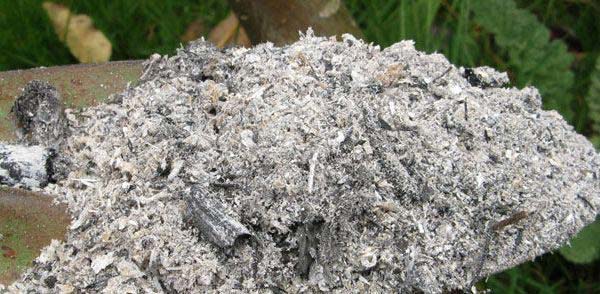

For grape vines
Graceful grapes are among crops that consume significant amounts of potassium. Therefore, ash feeding becomes an excellent option for nutrient fertilization for the crop. To provide grapes with a full range of nutritional components, it is required to feed according to a specific scheme.
- After harvesting, the vines need to be watered abundantly with plain water. 3 buckets of liquid are poured under the trunk of each vine. Add 300 grams of ash to the last bucket, mix the solution thoroughly and pour it under the bush.
- In the spring, the ash is buried during the digging of the soil (2 kg of product for each tree trunk circle).
- In the first days of summer, the top layer of the soil is powdered (2 glasses of the product for each vine).
It is useful to use this feeding system every 4 years. It should be taken into account that if grapes grow on alkaline soil, then it is recommended to reduce the indicated ash ratios by half. This will help avoid chlorosis on the crop.
Every year in the summer it is useful to carry out foliar feeding of grape vines by spraying.
It is recommended to spray the grapes in dry weather in the evening or early morning. It is important that the rays of the sun do not fall on the sprayed foliage, since solar activity can provoke burns.
To increase the yield of the crop, it is necessary to prune branches and diseased shoots annually in autumn. The remains of plants can be used as plant material for the preparation of ash. The ashes of grape branches contain large proportions of potassium and phosphorus.
For garden flowers
The ash contains a full range of nutrients, so it serves as an excellent fertilizer for flower crops. Ash can be used to fertilize all types of flower beds and rose gardens.
The simplest fertilization method is to embed the ash in the soil. Fertilizer must be evenly distributed over the flower garden.
In the case of flower crops, ash is not used as a nutrient fertilizer before planting. Top dressing will be effective only during the vegetative growth of plants.
- Root top dressing is made with ash infusion. The frequency of using the fertilizer is every 2 weeks.
- Foliar dressing (spraying) is effective before sunrise or in the evening. The implementation of this recommendation will serve as the prevention of burns on the foliage.
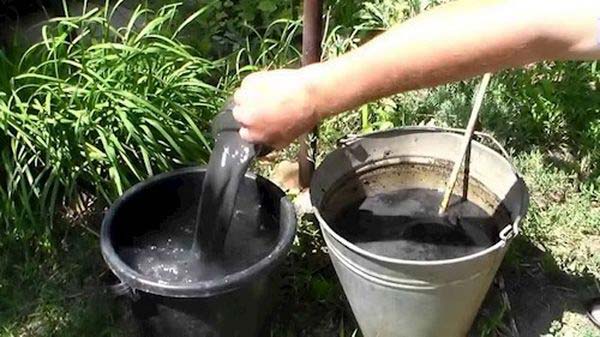

For home flowers
Houseplants are well fed with dry ash or water solution. Dry dressing is applied during plant transplantation. It is allowed to bring ash directly into the pot or subsequently add it by mixing into the soil.
- In the process of transplanting flowers in the spring add 2 tbsp. spoons of the product per 1 kg of soil mixture. After thorough mixing, the nutrient composition is transferred to a pot, the plant is planted and the soil is poured abundantly with warm water. Such feeding becomes ideal for flowers such as fuchsia, geranium, cyclamen.
- An aqueous solution of top dressing is prepared at the rate of 3 tbsp per 1 liter of liquid. tablespoons of ash. The infusion is kept in a warm place for a week, then filtered.The finished solution is fertilized with flowers every 2 weeks. For a pot with a capacity of 1 liter, 100 ml of ash solution will be enough.
It is not recommended to use ash as fertilizer for indoor plants if flowers prefer to grow in acidic soils. These plants include:
- calla lilies;
- anthurium;
- azalea;
- gardenia;
- thuyu;
- indoor cypress.
Dry or wet?
Ash can be used both dry and in the form of solutions. The second option is, of course, preferable. Dry ash is brought in when digging beds or loosening the soil. But since some of the nutrients will necessarily be lost in this case, the concentration (in comparison with the infusion) should be slightly increased - 3-5 glasses per 1 sq. m.
When ash is introduced in liquid form, the soil itself and plant roots absorb nutrients dissolved in water much better and more fully.
To prepare the infusion, take 100-150 g of ash for 1 bucket of water. Stirring continuously, the solution is carefully poured into the furrows and immediately covered with earth. It is important to deliver the insoluble phosphorus-containing sediment to the plants.
Insect pest control ash
To eliminate parasites from the site, some gardeners use chemicals. The effectiveness of such funds has been proven, but there is also a risk that chemical compounds will spread to the fruit.
A safe and equally effective way to control pests is to use ash.
- To destroy snails and slugs, the soil is dusted with dry ash powder. It will be difficult for pests to move along the ash surface, so they will quickly leave the territory of the summer cottage.
- Dusting is also used against the wireworm, the pest paths are sprinkled with a layer of ash.
- To protect strawberry bushes from larvae, dusting is carried out with the edge of the holes during sowing of seedlings.
- To protect the tops of crops from the attack of insects such as aphids and white beetles, it is useful to periodically spray the plants with ash infusion.
- To protect agricultural crops (onions, cabbage, swede and radish) from cruciferous fleas and flies, an infusion of a mixture of ash and tobacco is used.
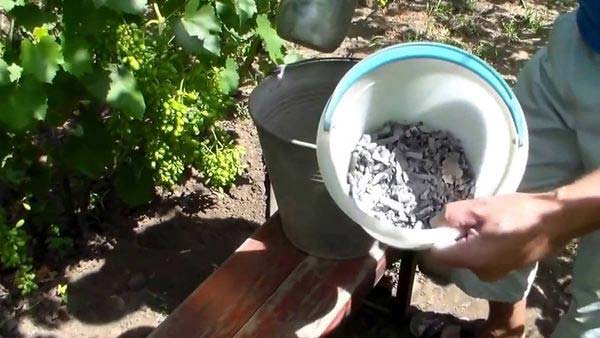

Ash as a fungicide
The ash treatment of agricultural crops is effective against powdery mildew and putrefactive diseases.
- Treatment of strawberries from gray rot is carried out with a concentrated infusion of ash (take 300 g of product for 6 liters of water, leave for 6 hours, then strain and add 4 liters of concentrated soap solution). At the first signs of pathological development, strawberry bushes are processed every 2 weeks. Calculation of the active solution for each bush - up to 2 liters.
- Root rot on cucumbers is treated with dry ash powder by dusting. Another method of treatment is to treat agriculture with a solution based on 1 liter of water, 6 tbsp. tablespoons of ash and 2 tbsp. spoons of copper sulfate. Plants are processed during the period of the day when there is less solar activity.
Ash infusion is used to treat fungal diseases on cabbage and pumpkin plants. Preventive treatment of cabbage with an ash solution increases the resistance of agriculture to the development of keel and black leg.
The use of a solution or infusion of ash is effective only in early forms of disease development. If the disease is in an advanced stage, then it will be more effective to use fungicides based on chemical compounds.
Ash solution preparation
As a fertilizer for plants, it is required to prepare an ash solutionp: 150 g of ash is dissolved in a 10-liter bucket of water and the finished suspension is immediately poured into the grooves or holes where the plants will be planted, then the plots must be sprinkled with a layer of earth. The ready-made solution should not be stored, since the beneficial properties will soon disappear - a fresh solution must be prepared for each procedure.
Biohumus: composition, instructions for the use of fertilizers
When planting seedlings of peppers, cucumbers, tomatoes, eggplant and cabbage, it is necessary to pour 50 ml of ash solution under each plant.
Spraying with an ash and soap solution is necessary to destroy harmful insects and sores, as well as as a prophylaxis. It is prepared like this: 300 g of powder in a small amount of water should boil for 30 minutes, and when the broth has settled, it is filtered and water is added to make 10 liters. Many people add any soap for the best adhesion - 40 g will be enough. Evening calm weather is ideal for spraying. They are processed no more than 3 times a month.
The formula for preparing a universal ash solution for all cultures requires certain knowledge: in 1 tsp. - 2 g of ash, in 1 tbsp. l. - 6 g, in 1 matchbox - 10 g of powder, in 1 glass - 100 g, in a liter jar - 500 g of ash.
When can ash harm plants?
Ash is not useful for all crops. If crops grow in fertile soil and do not lack nutrients, then additional feeding can harm them. Micronutrient oversaturation is also harmful to crops, as is their lack.
Ash cannot be used as fertilizer in the following situations:
- if agricultural crops prefer to grow and develop in acidic soils (berry crops, rhododendrons and some flower plants);
- the soil at the summer cottage contains a large alkali ratio;
- if recently (within 1 month) nitrogen-containing fertilizers were used to fertilize the soil (urea, ammonium nitrate, droppings of farm animals, etc.);
- if the product has been stored in a damp place.
Ash is a universal top dressing. When used correctly, it will help plants grow stronger and improve yields. But there are also situations where ash can harm agricultural crops. Only the correct and harmonious use of nutritious feeding will guarantee the active development of plants and a high-quality harvest.
For the time being
Ash efficiency also depends on the correct time of its application. For example, if there is clay or loam on the site, bring ash in the fall for digging. If the soil is light (sandy, sandy loam) or peat bog - in the spring (after the end of the rainy season). Volume - 100-200 g per 1 sq. m. You can give ash instead of mineral fertilizers and directly when preparing beds for cabbage, root vegetables, onions, cucumbers, tomatoes, lettuce, dill, spinach - up to 300 g per 1 sq. m. m.
It is good to sprinkle ash even on the lawn, then the grass grows better and there are fewer weeds. By the way, wood fertilizer copes well with such weeds as woodlice, wheatgrass, halinsogo and horsetail.
Ash perfectly neutralizes acidic soils: in areas with a humid climate, they still gradually acidify. Ash introduced in the fall increases the amount of phosphorus in the ground and increases the cold resistance of crops.
Those who use wood fertilizer also do the right thing when composting. If each layer of grass and food waste is sprinkled with ash (10 kg of ash per 1 cubic meter of compost), then the organic matter will turn into humus much faster.

